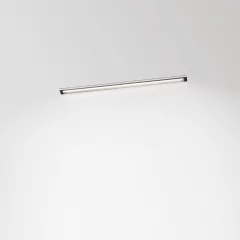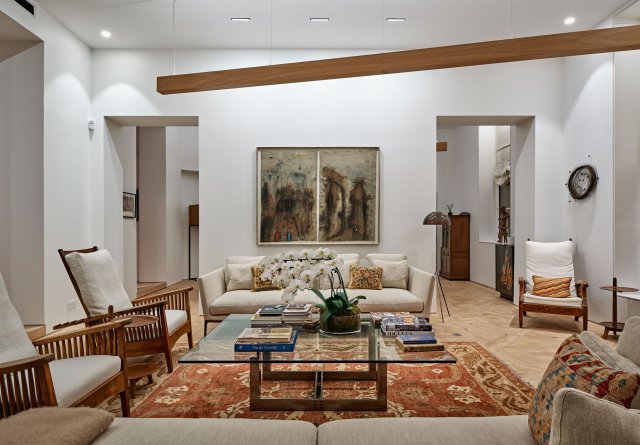
DOT.COM
L'histoire de la famille Dot.Com ne date pas d'hier : elle a d'abord été présentée en 2004 comme un luminaire à LED unique, puis en 2008 comme un luminaire à LED multiples avec 4 ou 6 points de LED, et enfin en 2010 comme un module à 4 ou 6 LED. Aujourd'hui, les LED étant plus fonctionnelles et performantes, Dot.Com renaît sous la forme d'une famille de luminaires dotés de plusieurs points de LED pour créer les environnements lumineux les plus discrets, mais aussi les plus fonctionnels.
La version Small n'a besoin que de 25 mm / 1" de largeur, mais son aspect quasi invisible donne encore plus de caractère à l'éclairage.
La gamme Medium comprend une version réglable avec possibilité d'inclinaison à 30°, idéale -par exemple- pour mettre en valeur une œuvre d'art sur le mur.
Avec une puissance allant jusqu'à 12W par spot, la gamme Large est la plus puissante de la série Dot.Com. Disponible en version encastrée ou plafonnier.
En outre, Dot.Com ne se limite pas aux faisceaux d'éclairage, elle propose également une gamme de lèche-mur linéaires pour un obtenir une lumière douce et uniforme le long de surfaces verticales. Disponibles sous forme de luminaires individuels, de modules à intégrer dans les profilés magnétiques mais aussi en profilés sans bordure sur mesure, les lèche-murs sont parfaits pour adapter la lumière à vos désirs spécifiques.
La version Small n'a besoin que de 25 mm / 1" de largeur, mais son aspect quasi invisible donne encore plus de caractère à l'éclairage.
La gamme Medium comprend une version réglable avec possibilité d'inclinaison à 30°, idéale -par exemple- pour mettre en valeur une œuvre d'art sur le mur.
Avec une puissance allant jusqu'à 12W par spot, la gamme Large est la plus puissante de la série Dot.Com. Disponible en version encastrée ou plafonnier.
En outre, Dot.Com ne se limite pas aux faisceaux d'éclairage, elle propose également une gamme de lèche-mur linéaires pour un obtenir une lumière douce et uniforme le long de surfaces verticales. Disponibles sous forme de luminaires individuels, de modules à intégrer dans les profilés magnétiques mais aussi en profilés sans bordure sur mesure, les lèche-murs sont parfaits pour adapter la lumière à vos désirs spécifiques.
Lumens: 213 lm - 1738 lm
Puissance: 3 W - 29 W
Plage de faisceau: 14° / 16° / 32° / 34° / 46° / 49° / 59°
Temperature de couleur: Blanc Halogène (+2700K) / Blanc Neutre (+3000K) / Blanc Chaud (+3500K)

